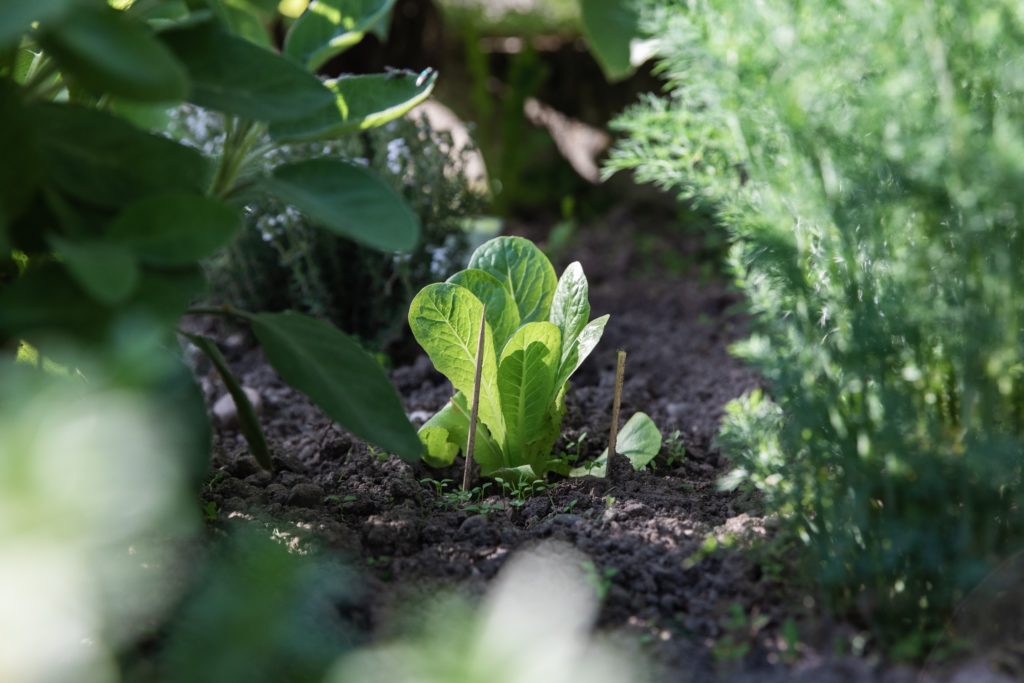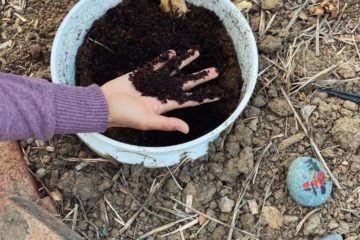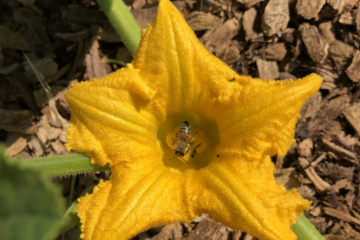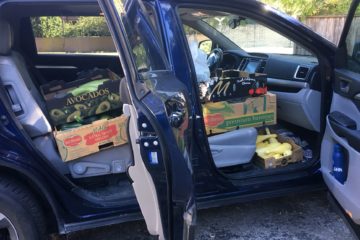By James Moy, Grants and Development Lead

Climate Change
Climate change and global warming are everywhere in the news nowadays. While you may feel helpless, there are simple actions you can take that are a tremendous benefit to the environment and community. While carbon emissions have become synonymous with global warming and climate change, there are solutions that help to alleviate these environmental issues that are easy to start in your own backyard. Starting a garden with healthy soil and a variety of plants has benefits beyond the immediate garden’s output of fresh produce. While curbing carbon emissions through large-scale regulation is much more daunting, creating a sustainable system of carbon sequestration from a personal/community garden is just as valuable to the environment and greater community. Including diverse permaculture and sustainable land management practices are key ways to sustain the capacity of complex natural carbon storage systems.
Carbon Sequestration in Veggie Gardens
How can building a small garden help? Creating more green spaces that pull excess carbon out of the atmosphere has a positive environmental effect. Plants take in carbon dioxide, a greenhouse gas, and use it to grow. The carbon is stored in the structure of the plant and in the soil. Thus, gardens are a sustainable system and an ecological service, no matter how big. They are helpful in mitigating the effects of excess greenhouse gasses released into the atmosphere.
One aspect of veggie gardens to think about is the soil. While most understand the benefits of having plants and greenery in their gardens, they overlook the value of healthy soil in the process of absorbing excess carbon. Most importantly, by creating healthy soil through organic practices such as composting, the natural habitat can host a range of organisms that work to lock carbon in the soil. The organisms thrive and support the natural cycling processes of the garden plants. Creating a safe and healthy habitat for bacteria, fungi, and microbes allows the garden as a whole to absorb and contain much more carbon within its functions.
Another aspect of the garden that can be considered is the diversity of the plants and produce being grown. While rows and rows of tomatoes may be aesthetically pleasing, monocropping in the garden can actually damage the soil and drain it of nutrients, leaving it unable to retain carbon from the atmosphere in the next cycle. Growing a diverse group of plants, especially ones that are compatible with nutrient cycles and turnover rates, is crucial to maintaining healthy soil composition. In turn, the garden functions as a carbon sink to store greenhouse gasses.
Here is a helpful list of plants that grow well together: https://gilmour.com/companion-planting-chart-guide

How to Make it Work
The best design for an urban garden to support environmental services is to keep ecological and environmental concepts in mind when planning a garden space. Allowing natural cycles to occur is the single most valuable factor in implementing a carbon sequestration plan. Modern designers should work to create new spaces with multifunctional goals in mind (environmental and societal) that balance a thriving, long-term community project.
When designing your own garden, keep in mind the importance of soil and plant health. Humus, the dark organic matter in soil that is formed by the decomposition of plant and animal matter, is crucial to retaining moisture and providing ample nutrients to the plants in the area. Why is this type of soil so important? When plants undergo photosynthesis, they suck carbon dioxide out of the atmosphere. Some of that carbon is released through the roots to the soil in the form of sugarary liquid carbon. Microbes and soil bacteria use this as fuel for themselves and in exchange provide the plant with any nutrients it needs to grow and thrive. The liquid carbon is then absorbed by the soil microbes where it remains locked underground. This process is critical in sucking excess carbon out of the atmosphere and holding it underground in the natural habit for years.
Why It Matters
Mother nature has already provided us with a perfect climate change solution for anyone that has access to a space with soil and plant matter. In the US alone there is an estimated “excess of 40 million acres of lawn ” that has the potential to be converted into productive gardens, all of which could suck extra carbon out of the atmosphere. Everyday gardeners can take part in the climate solution, sucking up carbon and releasing oxygen for all of us to enjoy.
Creating a healthy garden space for beneficial ecosystems allows for many of the natural services to benefit our own spaces. Aside from fresh produce, gardens can act as filters for rain runoff, reinforce the soil for beneficial microbes, reduce waste through composting, and produce fresh oxygen. This is your opportunity to take action and participate in the climate solution. Look into ways to contribute to existing gardens or even build one yourself! It’s just that easy and also quite a bit of fun!
Research Sources
Plaines River in Illinois. As programs co-chair of West Cook Wild Ones, et al. “Carbon Gardening: A Natural Climate Solution That Can Help Reduce CO2 Emissions While Restoring Biodiversity.” Resilience, 27 Jan. 2020, https://www.resilience.org/stories/2020-01-27/carbon-gardening-a-natural-climate-solution-that-can-help-reduce-co2-emissions-while-restoring-biodiversity/.
Grover, Sami. “Your Garden Eats Carbon (so Please Feed It Well!).” Treehugger, Treehugger, 8 Feb.
2021, https://www.treehugger.com/your-garden-eats-carbon-so-please-feed-it-well-4857074.
“Soil Carbon Sequestration: New Insights into a Key Issue.” Chicago,
https://www.chicagobotanic.org/research/soil_carbon_sequestration_new_insights_key_issue
Toensmeier, Eric, et al. “Perennial Vegetables: A Neglected Resource for Biodiversity, Carbon
Sequestration, and Nutrition.” PLOS ONE, Public Library of Science, https://journals.plos.org/plosone/article?id=10.1371%2Fjournal.pone.0234611.
“Why Not Start Today: Backyard Carbon Sequestration Is Something Nearly Everyone Can Do.”
Resilience, 15 Dec. 2020, https://www.resilience.org/stories/2015-09-02/why-not-start-today-backyard-carbon-sequestration-is-something-nearly-everyone-can-do/.



0 Comments